In the vibrant world of bird photography, there’s an understated elegance to monochrome imagery that often gets overlooked. While colorful feathers and iridescent plumage certainly make for stunning photographs, black and white bird photography offers a distinct artistic dimension that can transform your portfolio. Stripping away color forces both photographer and viewer to focus on the essence of the subject—texture, form, behavior, and expression. Whether you’re an experienced wildlife photographer or a hobbyist looking to expand your creative horizons, monochrome bird photography presents a compelling artistic challenge that can dramatically enhance your skills and yield timeless, evocative images.
The Timeless Quality of Black and White
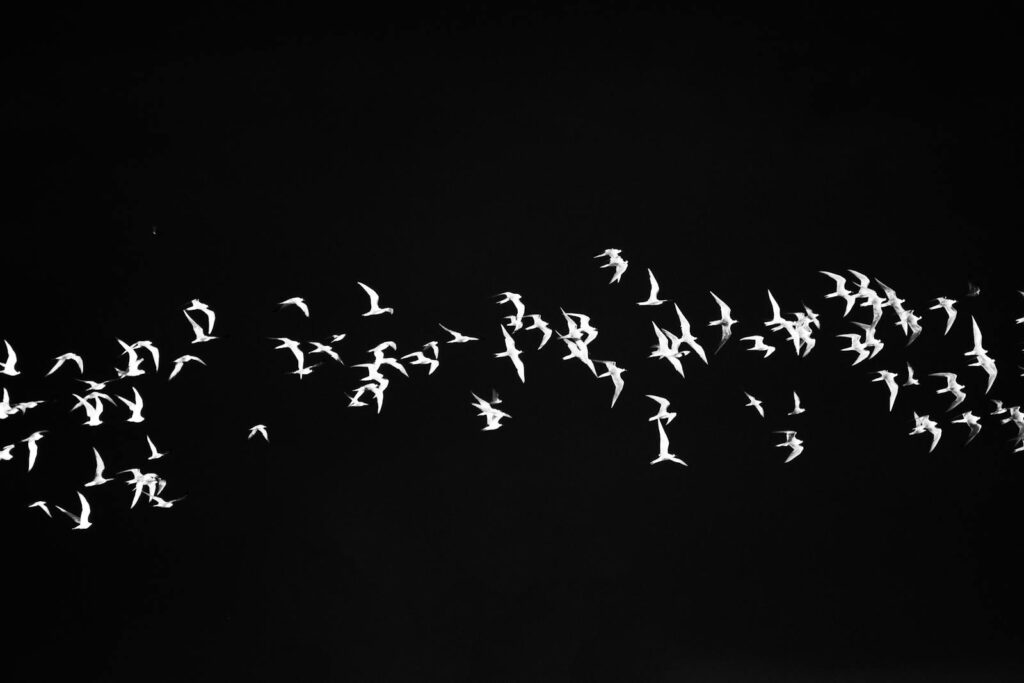
Black and white photography has endured as an art form for over a century, carrying with it a certain gravitas that color sometimes cannot achieve. When applied to bird photography, monochrome creates images with a classic, enduring quality that transcends trends and fashions in photography. The absence of color gives these images a timeless feel that connects viewers to the rich history of wildlife photography pioneered by masters like Ansel Adams, though in the avian realm. Furthermore, monochrome bird shots often possess an emotional depth that resonates differently than their colorful counterparts, creating connections through shape, contrast, and tone rather than the distraction of vibrant plumage. This timelessness makes black and white bird photography particularly valuable for fine art prints and exhibition pieces.
Emphasizing Form and Texture
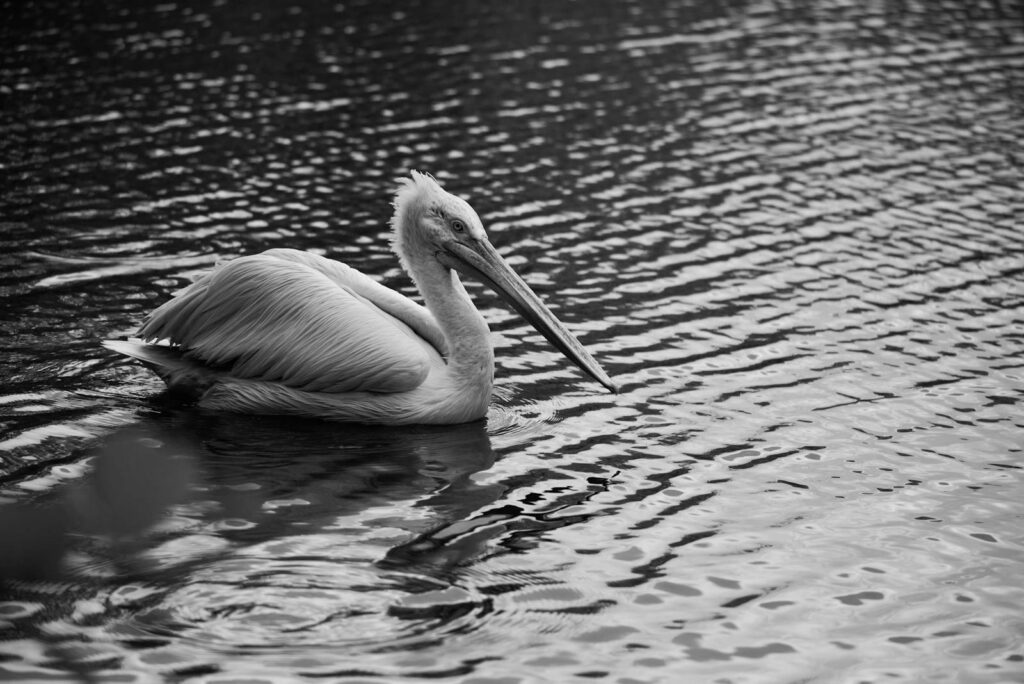
When color is removed from the equation, the viewer’s eye immediately gravitates to the bird’s structural elements and textural details. The intricate patterns of feathers, the delicate curves of beaks, and the subtle textures of wings become the stars of the composition in monochrome photography. A heron’s crest feathers, for instance, transform from merely “white” to a study in luminosity and texture when photographed in black and white. The scaly texture of a raptor’s legs or the velvety appearance of an owl’s facial disc gains new prominence without color competing for attention. This emphasis on form and texture allows photographers to showcase the extraordinary structural adaptations of birds that might otherwise be overshadowed by colorful plumage.
Creating Mood and Atmosphere
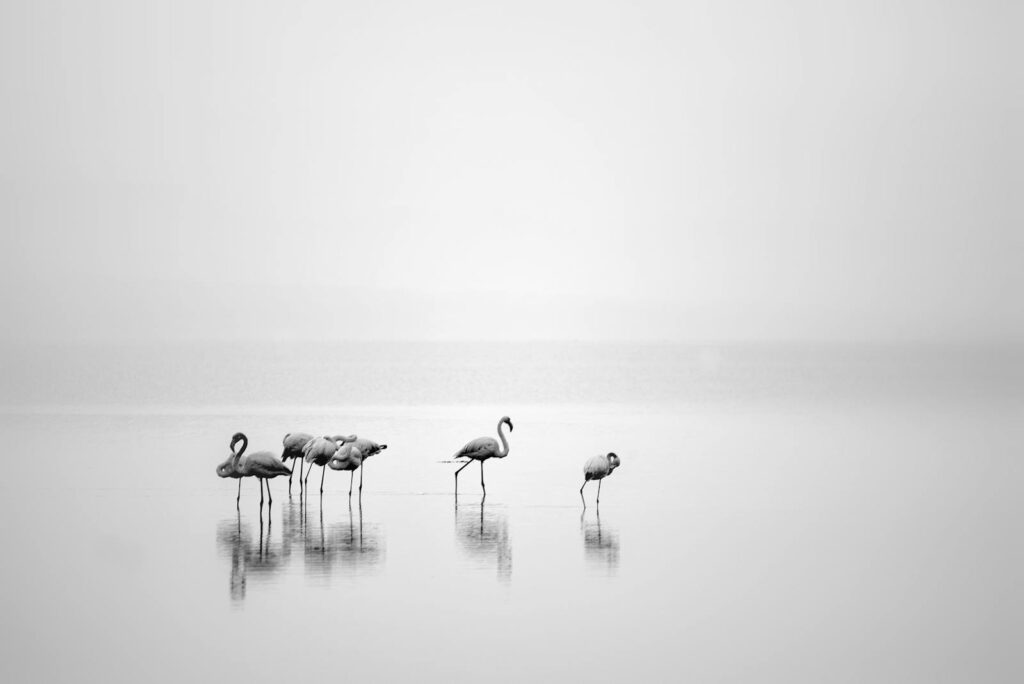
Monochrome has an unparalleled ability to establish and enhance mood in bird photography. A misty morning with a lone heron becomes hauntingly beautiful in black and white, the bird’s silhouette emerging from gradients of gray that color simply cannot capture with the same emotional impact. The stark contrast of a snowy owl against a dark background creates a dramatic tension that speaks to the bird’s mysterious nature and northern habitat. Weather conditions that might appear dreary in color—fog, rain, overcast skies—become atmospheric elements that add depth and emotion to monochrome bird images. This atmospheric quality gives photographers the tools to convey not just what a bird looks like, but how it feels to encounter it in its natural setting.
Highlighting Behavior and Expression
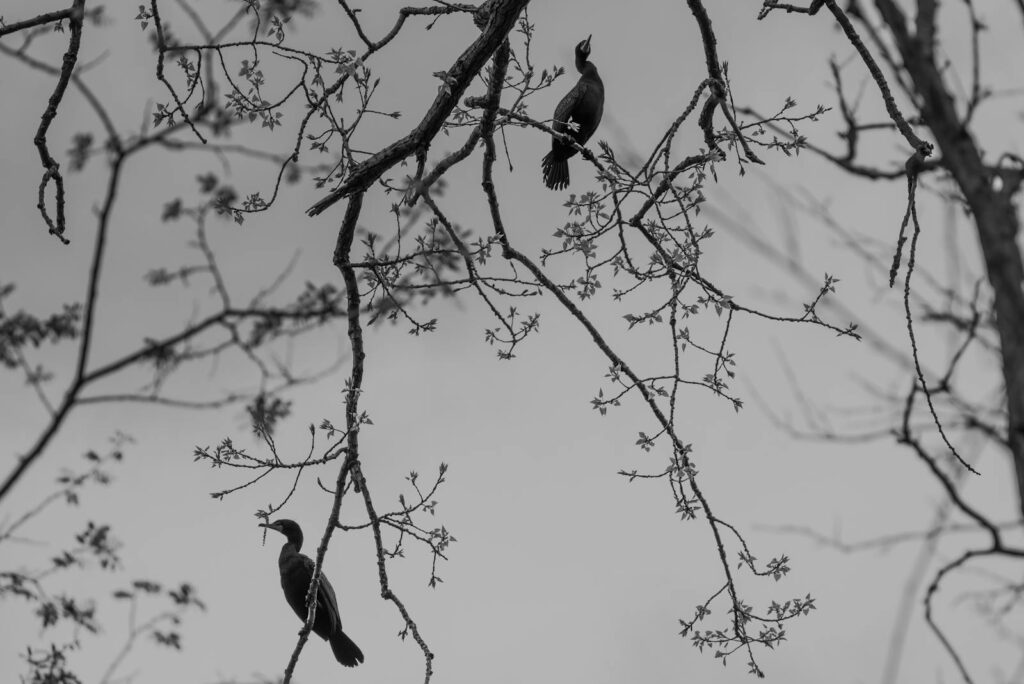
Without the distraction of color, the behavioral aspects and expressions of birds often become more apparent in monochrome photography. A territorial display, a feeding interaction, or a moment of alertness gains clarity and impact when rendered in black and white. The tension in a bird’s posture before flight or the concentration in its eyes during hunting becomes the focal point of the image rather than its colorful appearance. This emphasis on behavior makes monochrome particularly effective for storytelling in wildlife photography, allowing the photographer to direct the viewer’s attention to the narrative elements of the scene. Even subtle expressions—the slight tilt of a head or the partially opened beak—gain significance and narrative power in the monochrome format.
Overcoming Challenging Lighting Conditions
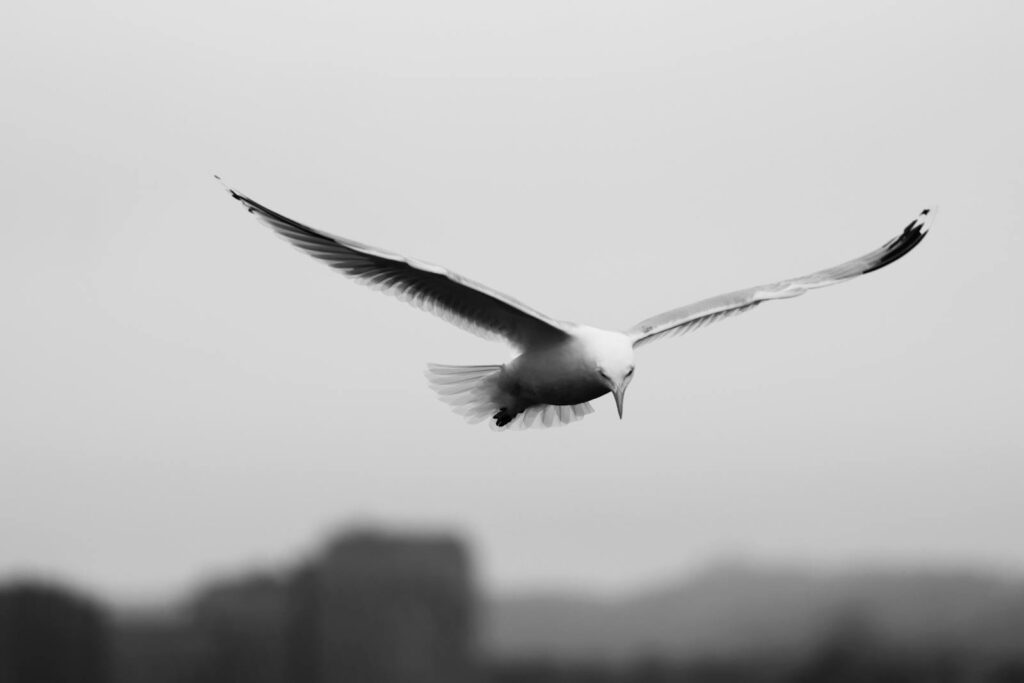
Difficult lighting situations that might ruin a color photograph can actually enhance a monochrome image, giving photographers more flexibility in the field. Harsh midday light that washes out color and creates unflattering shadows can be transformed into dramatic high-contrast black and white images that emphasize the bird’s silhouette and form. Low-light scenarios where color appears muddy or requires excessive noise reduction often translate beautifully to monochrome, preserving detail and atmosphere without the distraction of color noise. Even backlit situations, typically challenging for color photography, can create stunning monochrome images with rim lighting that highlights the contours of wings or the texture of feathers against a dark background. This adaptability to challenging light makes monochrome bird photography particularly valuable for photographers who can’t always shoot during the golden hours.
Sharpening Your Compositional Skills
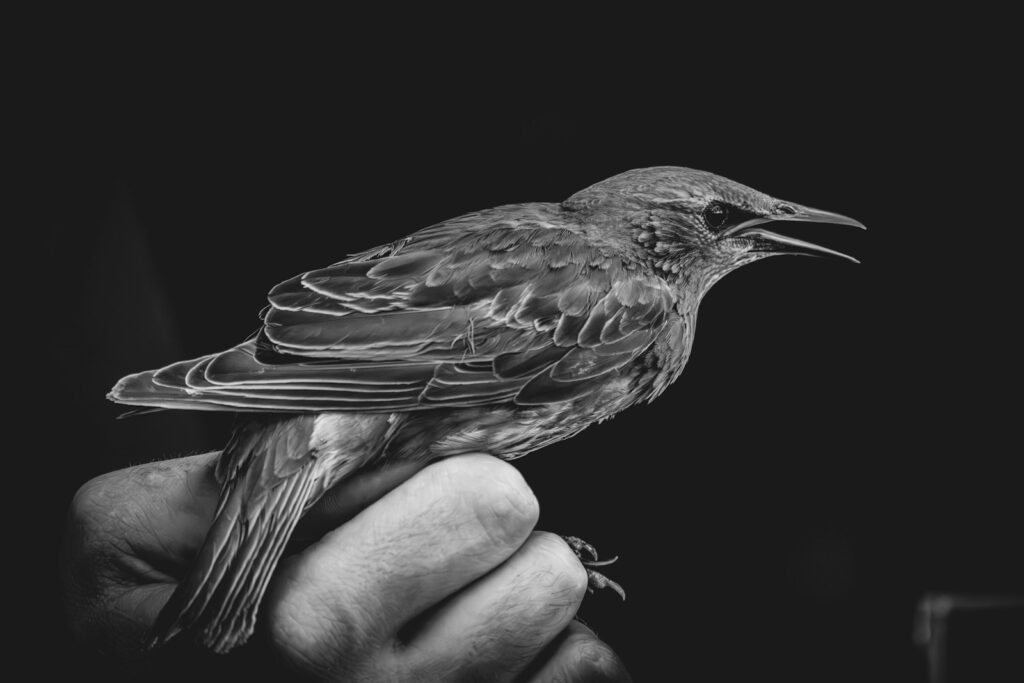
Working in monochrome forces photographers to develop stronger compositional skills, as they can no longer rely on colorful subjects to carry an image. Without vibrant plumage to draw the viewer’s eye, photographers must pay closer attention to leading lines, negative space, the rule of thirds, and other compositional elements that create powerful images. The arrangement of tones throughout the frame becomes critical, with photographers learning to balance light and dark areas to create visual flow and interest. This compositional discipline transfers back to color photography as well, making monochrome practice a valuable training exercise for bird photographers of all experience levels. Many photographers find that after a period of shooting exclusively in black and white, their color work improves significantly as they apply their enhanced compositional awareness.
Creating Contrast Between Subject and Environment
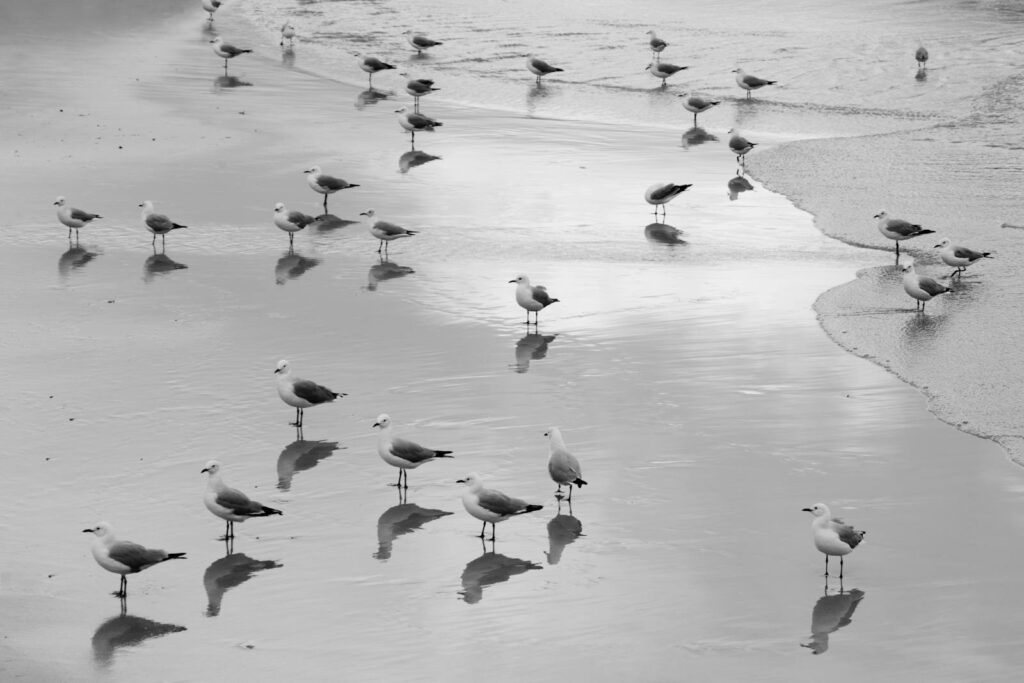
One of the most compelling aspects of monochrome bird photography is the ability to create stark separation between the subject and its environment through tonal contrast. A dark bird against a light sky or water creates immediate visual impact through this fundamental contrast, drawing the viewer’s eye directly to the subject. Conversely, a light-colored bird against darker foliage or water stands out dramatically in ways that might be more subtle in color. This contrast-based separation often creates cleaner, more graphically powerful images with immediate visual impact that cuts through the noise of today’s image-saturated world. The simplicity of this dark-against-light relationship harkens back to the origins of art itself, connecting with viewers on a primal visual level.
Revealing Details in White or Black Birds
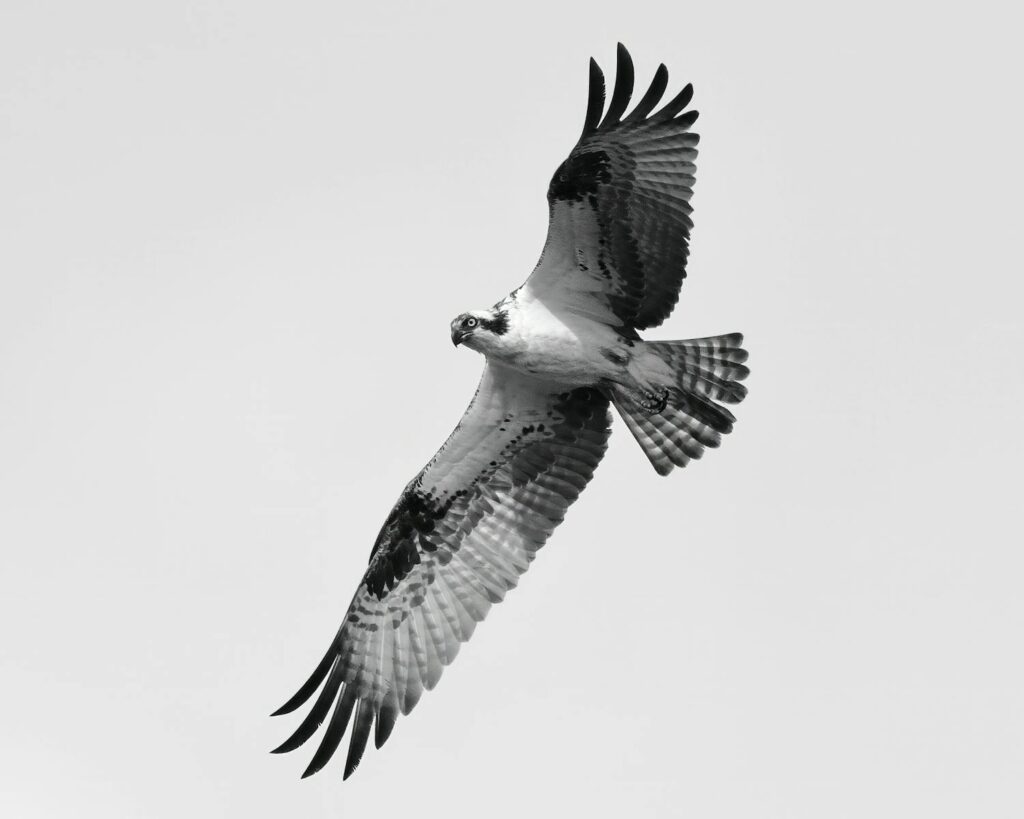
Birds with predominantly white or black plumage often present exposure challenges in color photography, with details easily being lost in highlights or shadows. Monochrome processing provides greater control over how these tonal extremes are rendered, allowing photographers to recover detail in white feathers that might otherwise be blown out or reveal texture in black plumage that might disappear in shadows. Species like egrets, swans, and white ibises benefit from the nuanced tonal control that monochrome processing offers, revealing subtle gradations in their seemingly “white” feathers. Similarly, birds like ravens, crows, and cormorants gain depth and dimension in monochrome that might be lost in color images where they appear as featureless black shapes. This technical advantage makes monochrome particularly well-suited for species at the extreme ends of the brightness spectrum.
Embracing Minimalism in Bird Photography
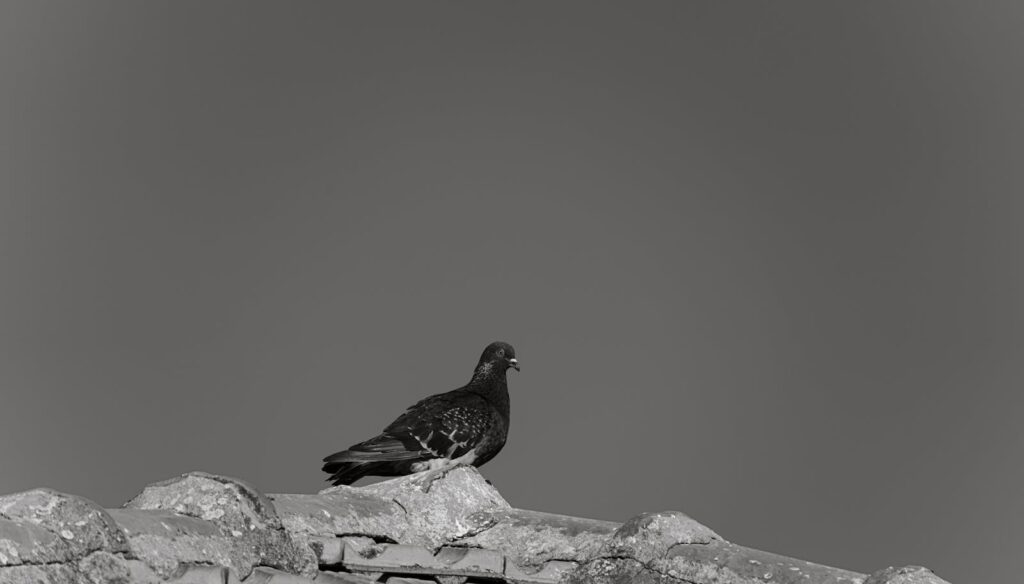
Monochrome naturally lends itself to minimalist approaches in bird photography, creating images of elegant simplicity that speak volumes through what they exclude rather than include. A single bird silhouetted against a gradient sky, a lone shorebird reflected in still water, or a bird perched on a stark branch against negative space—all become powerful statements when rendered in black and white. This minimalist approach eliminates distractions and allows the essential nature of the bird to take center stage in the composition. The tonal simplicity of such images often creates a meditative quality that invites viewers to slow down and appreciate the subtle beauty of avian subjects. In our visually overwhelming world, such minimalist bird photographs offer a refreshing clarity and focus.
Creating Cohesive Bird Photography Projects

For photographers working on long-term bird projects or photo essays, monochrome provides a unifying aesthetic that can tie together images taken in different seasons, locations, and lighting conditions. A series of black and white images maintains visual consistency regardless of whether they were captured on sunny summer mornings or overcast winter afternoons. This cohesion makes monochrome particularly valuable for photo books, exhibitions, or portfolio projects focused on a specific species or bird behavior. The consistent visual language of monochrome allows viewers to focus on the connecting themes and narrative across multiple images rather than being distracted by varying color palettes. Many renowned wildlife photographers have created their most memorable and impactful bodies of work by committing to the monochrome medium for entire projects.
Technical Considerations for Monochrome Bird Photography
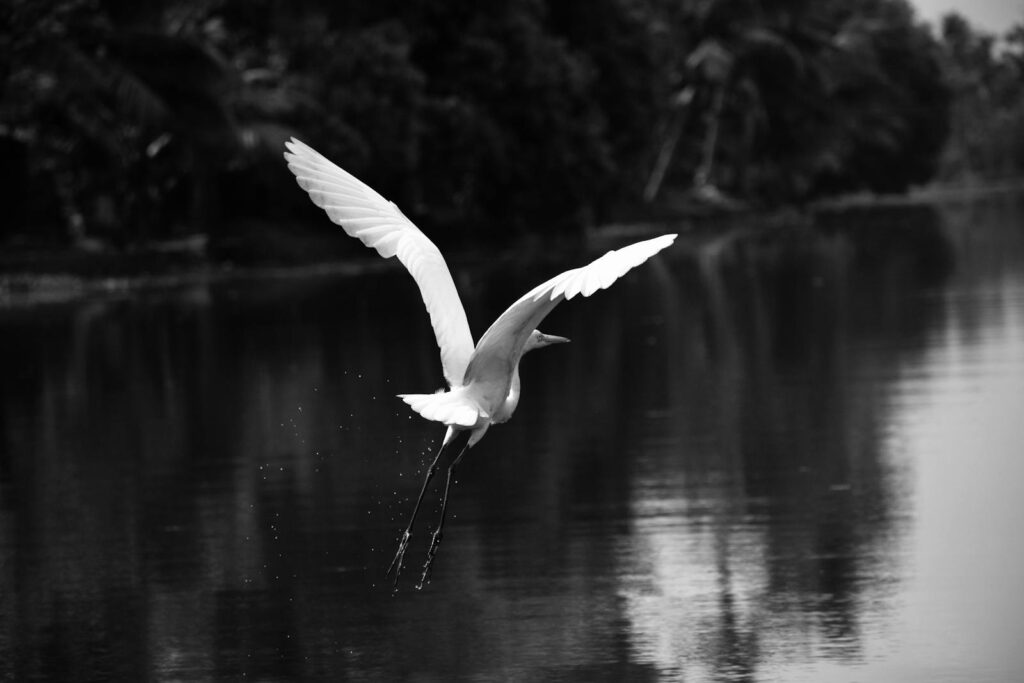
While most digital cameras allow for black and white conversion in post-processing, certain technical considerations can enhance your monochrome bird photography from the moment of capture. Shooting in RAW format is essential, as it preserves all the color information for optimal black and white conversion later, giving you maximum control over how different colors translate to grayscale tones. Using colored filters—either physical filters or their digital equivalents during post-processing—can dramatically alter how certain colors render in monochrome, allowing you to darken skies or brighten plumage as needed for artistic effect. Understanding how to use luminosity masks and selective contrast adjustments helps bring out texture in feathers while maintaining detail in highlights and shadows. Advanced techniques like dodging and burning can be used to guide the viewer’s eye through the image in ways that are less obvious but equally effective as in color photography.
Developing Your Monochrome Vision
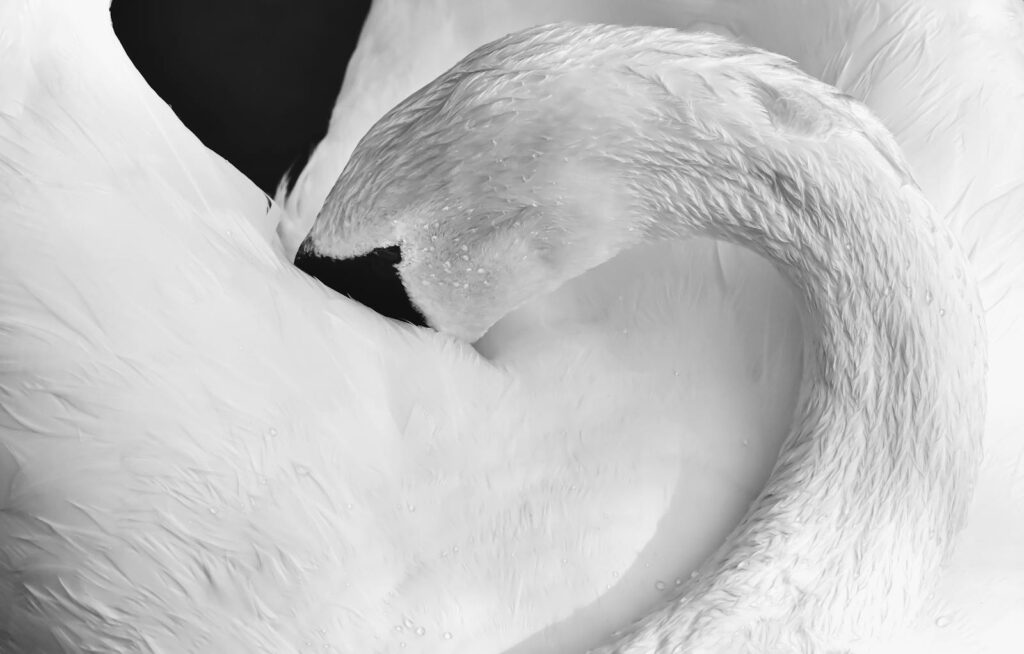
Perhaps the most valuable aspect of exploring monochrome bird photography is how it trains your photographic eye to see beyond color. With practice, photographers develop what many call a “monochrome vision”—the ability to visualize scenes in terms of tone, contrast, and texture rather than hue. This skill develops over time as you learn to recognize scenes and lighting conditions that will translate effectively to black and white. Setting your camera’s electronic viewfinder or rear screen to monochrome can help train this vision in the field, allowing you to compose specifically for black and white results rather than relying on post-processing conversions as an afterthought. This intentional approach to monochrome bird photography yields far stronger results than simply converting color images that don’t work. Many photographers find that this developed monochrome vision becomes one of their most valuable photographic skills, informing both their black and white and color work.
Monochrome bird photography offers a unique pathway to creating compelling, artistic images that stand apart from typical wildlife photographs. By emphasizing form, texture, behavior, and mood rather than colorful plumage, black and white challenges photographers to see birds through a different lens and viewers to appreciate these creatures on a deeper level. The technical and compositional skills developed through monochrome work enhance all aspects of bird photography, while the timeless quality of the resulting images ensures they remain impactful long after photographic trends have changed. Whether you’re looking to overcome challenging lighting, create more cohesive projects, or simply expand your creative horizons, making the shift to monochrome—even temporarily—can transform your approach to bird photography and result in images of lasting artistic value.
